Recreating the Country blog |
|
Producing seed for native grassland restoration in a containerised Seed Production Area by John Delpratt 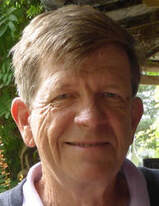 Guest blogger John Delpratt is an Honorary Fellow with the University of Melbourne and was a lecturer in plant production and seed technology at the University’s Burnley campus for 25 years. John has worked on native grassland conservation with an initial focus on cultivation and seed production systems for grassland forbs. With Dr Paul Gibson-Roy he has played a key role in the reconstruction of diverse native grassland communities by direct sowing grassland seed grown by volunteers in seed production areas around Victoria. John has generously offered to share with us his depth of knowledge on how large volumes of native grassland seed is produced and harvested for these impressive restoration projects.  A restored indigenous grassland, Glenelg H’way, Wickliffe. A restored indigenous grassland, Glenelg H’way, Wickliffe. A reliable source of seed A reliable source of good quality and genetically appropriate seed is an important first requirement for restoring our wonderful and diverse temperate native grasslands and grassy understorey plant communities (Images 1, 2 & 3 below). With several hundred species of grasses, grass-like species (e.g. Lomandra species), colourful forbs and small shrubs comprising natural temperate grassy communities, and only a few species available commercially as seed, the grassland restorationist is left with three choices:
Collecting from local remnants requires careful adherence to permit conditions and a sound knowledge of the target species. Many remnants support an impressive range of look-alike introduced species. Also, good seasonal conditions and a number of site visits will be needed to capture the quantity of seed and diversity of species needed to build a functional and satisfying grassland. This leaves the third option; grow your own – the topic of this article and possibly the most fun! Please click on the images below to enlarge and read the caption Developing a seed production area (SPA) Purpose To grow your own seed as a cost-effective (but labour-intensive!) way to acquire sufficient quantities of good quality seed from a diverse range of species. Initial seed sources As already mentioned, many native grassland species are not readily available through commercial sources. Depending on your objectives and resources, you may be able to collect small, representative samples of target species under permit from local remnants. To grow the required transplants to start a SPA requires very little seed in most cases. To capture appropriate genetic diversity, small samples of seed should be harvested from numerous plants. For longer-flowering species, two or more harvests throughout the season should increase genetic diversity in your production crops. In recent years, geneticists have recommended that for widespread species, collecting from several populations is preferrable to growing from only one source. It can be difficult to discover the full history of purchased transplants. You can manage this by collecting your own seed. However, if good quality, locally-sourced tube stock is available it may be better to proceed with your SPA plan, rather than be distracted by the detail. Grow or purchase many (say 50 or more) small plants per species in preference to a few larger plants. In cultivation, most native grasses and forbs will grow at high densities and produce seed in their first year. Deciding to produce ‘climate ready’ seed can add an interesting layer of complexity. This usually involves sourcing a percentage of your seed (or transplants) from populations some distance from where you plan to restore grassland. For south-eastern Australia, this usually means sourcing some of your planting from warmer and dryer locations. 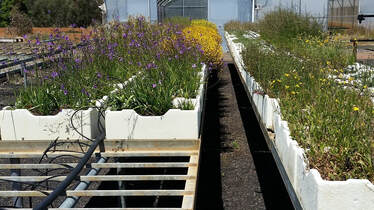 Image 4. A SPA operated by the Woorndoo Chatsworth Landcare Group to produce seed for their direct-sown native grassland restoration projects. Plants are grown in polystyrene boxes and irrigated with two microsprays per box. Image 4. A SPA operated by the Woorndoo Chatsworth Landcare Group to produce seed for their direct-sown native grassland restoration projects. Plants are grown in polystyrene boxes and irrigated with two microsprays per box. How much space do you need? The design, size and species diversity of your SPA will depend on its purpose, and the scale of your planned works. A couple of initial considerations are discussed below;
2. Are you planning to grow your seed production crops in field beds or in containers? If you are aiming to grow large quantities of native grasses, field beds may be the most affordable option. However, most field sites have a seedbank of competitive species that will quickly become contaminants in your harvested seed. Therefore, field crops require special expertise and commitment that are beyond the scope of this article, which will focus on above-ground, containerised seed production areas (SPAs). 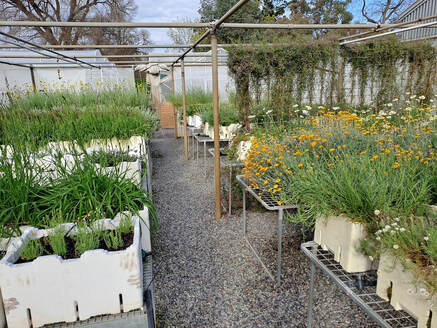 Image 5. Burnley SPA, the production area for many of the forbs direct-sown at Gatehouse St. (image above right). Image 5. Burnley SPA, the production area for many of the forbs direct-sown at Gatehouse St. (image above right). Building and managing a containerised SPA One of the great advantages of a containerised SPA is that it can be established anywhere you have access to a bit of space, water, adequate sunlight and enough enthusiastic labour. If planning to establish a large area of grassy vegetation, the dominant grass species will usually be sourced from a commercial grower or from local field harvesting. Therefore, although an above-ground SPA can be built at any scale, they usually focus on species that add diversity and colour to an otherwise grass-dominated plant community. When designing a SPA, I strongly recommend that the plants be grown at around waist height. Although benches or other forms of support for your containers will add to the initial investment, ease of access to the crop will pay huge dividends in increased ease of maintenance operations and volunteer/staff comfort and enthusiasm (Images 4 & 5). Growing medium Any weed-free container medium that supports healthy plant growth (commercial or home-made) can be used. Long-term, controlled-release fertilisers will simplify the plants’ nutritional requirements. Re-apply annually. In grassland species, I’ve seldom seen adverse responses to phosphorus from standard N:P:K fertilisers (with Brunonia australis a possible exception). But if in doubt, use a low-phosphorus ‘natives’ product. Containers For relatively small-scale SPAs, polystyrene vegetable boxes are a light-weight, relatively durable container. We line the base of these boxes with a layer of geofabric to reduce the rate of drainage of irrigation water and to retain moisture below the growing medium. They can often be sourced for free but consistent dimensions can aid management. New boxes can be bought for a relatively small outlay. With minimal handling, the boxes can last for at least 5 years, although over time they become increasingly brittle and shed fine dust as they degrade. A single polystyrene vegetable box, filled with moist organic growing medium and plants, can be carried by one person (although, given the state of my ageing back, sharing the load may be better advice). If you wish to avoid polystyrene, the choice of container is limited only by the practicalities of your site, your construction skills, your budget and your imagination. The basic requirements are that the container can hold an adequate depth of growing medium (say, at least 200 mm), drains well and can be filled, planted, irrigated, maintained, harvested, emptied and re-planted or disposed of conveniently. Irrigation As a general rule, irrigation should be applied at the base of the plants (or below the plants if using a wicking bed or hydroponic-style irrigation system) to avoid constant wetting of flowers and developing seed (see Image 4). Some species are able to produce good quantities of seed under overhead irrigation (e.g. lilies). However, pollination, fertilisation and seed maturation in the dense heads of daisies and a number of other species can be inhibited if regularly saturated. Some form of drip or micro-spray irrigation delivers water directly to the growing medium surface. In a standard polystyrene vegetable box, this can be achieved with two outlets per box. Programable controllers allow for flexibility in the frequency and duration of irrigation as species and seasonal requirements vary. If growing in easily-transportable containers or where a dual system of overhead and drip irrigation is feasible, a further option is to grow under overhead irrigation for most of the year and move to drip irrigation from flowering through to seed harvest. Irrigation extends the reproductive period for many species and may allow for a second harvest period after an autumn flowering. However, some tuberous species may benefit from reduced irrigation during their dormant period in summer. Images below of the SPA at Burnley campus provided by Fiona Love from her recent visit. Click on the images to enlarge the 'weeping' drippers used to water plants. 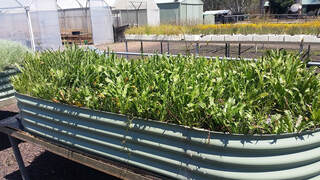 Image 6. The stoloniferous Prickfoot (Eryngium vesiculosum) is one of several species grown in large tubs at WCLG’s Chatsworth SPA. This allows for both seed production and the harvesting of vegetative pieces for supplementary tube stock production or direct planting into field sites. Image 6. The stoloniferous Prickfoot (Eryngium vesiculosum) is one of several species grown in large tubs at WCLG’s Chatsworth SPA. This allows for both seed production and the harvesting of vegetative pieces for supplementary tube stock production or direct planting into field sites. Planting Planting tube stock to establish your SPA means that you can control the number and density of productive plants. Most herbaceous grassland plants can be grown to maturity at high densities. While greater numbers increase the cost of planting stock, they reduce the number of containers needed to grow the desired population of a given species. Also, it ensures you are harvesting from many small plants, rather than fewer larger plants. This strategy potentially increases the genetic diversity of your harvested seed and reduces the risk that most of your seed is harvested from fewer large plants that happen to be suited to your cultivation system. When growing in a standard polystyrene vegetable box, I usually plant from 11 to 16 plants per box (+/- 5 cm between plants). However, planting density can vary with the requirements of the species and the size of the planting stock. These same planting densities can be applied to other containers. Plants that expand by rhizomes or stolons (e.g Goodenia pinnatifida; Eryngium vesiculosum; Glycine latrobeana) are better suited to containers with a larger surface area such as raised garden beds, or similar. An added advantage is that such crops can be used for both seed production and for vegetative off-sets, cuttings or plugs. These can be used for additional tube stock propagation for supplementary plantings (Image 6 above).  To give easier access for harvest, species that produce long stems (e.g. Kennedia prostrata; Convolvulus angustissimus; Glycine clandestina) are best grown either up a trellis or where they can trail downwards. Image 7 at right is from the Burnley SPA. The trellis allows for the upward growth of Glycine clandestina. The Kennedia prostrata can spill over its boxes towards the ground. Both arrangements allow for more productive plants and easier access to the numerous seed pods. 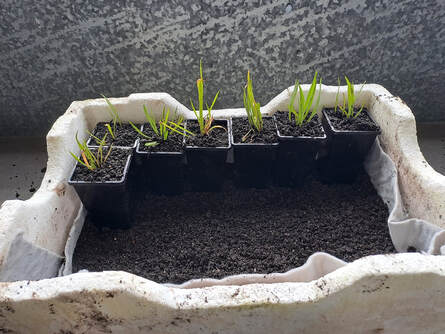 Image 8. Murnong; Yam Daisy (Microseris walteri) in individual containers being packed into a modified box system. Once installed, the tubes were covered with additional growing medium. Irrigation water moistens the geofabric and growing medium, ensuring each plant has access to sufficient water. After a season or more of seed production, the tube stock should be available for sale or field planting. Image 8. Murnong; Yam Daisy (Microseris walteri) in individual containers being packed into a modified box system. Once installed, the tubes were covered with additional growing medium. Irrigation water moistens the geofabric and growing medium, ensuring each plant has access to sufficient water. After a season or more of seed production, the tube stock should be available for sale or field planting. Another modification I have been trying with some success is to leave the SPA plants in a container and pack them into a box that has geofabric and a layer (say 2cm) of growing medium in its base. The bottom of each container rests on the moist growing medium allowing the plant access to irrigation water, firstly by capillary action and later as its roots expand out of the container drainage holes (Image 8 below). The plan is to use the plants for seed production for one or more seasons and still have them available for planting at a later time. Early indications are that this method is best suited to relatively open-growing species. The format allows for much higher densities because each plant has access to its own water and nutrients without too much below-ground competition from its neighbours. This could prove to be a good way to grow some tuberous species such as Murnong (Microseris walteri), Milk Maids (Burchardia umbellata) and Early Nancy (Wurmbea dioica), which may establish better in the field when planted as older, more advanced stock, while harvesting seed in the meantime. However, densely-growing plants (e.g. Linum marginale, Leptorhynchos squamatus and many others) tend to experience too much above-ground competition at these higher densities, leading to plant decline within the box. 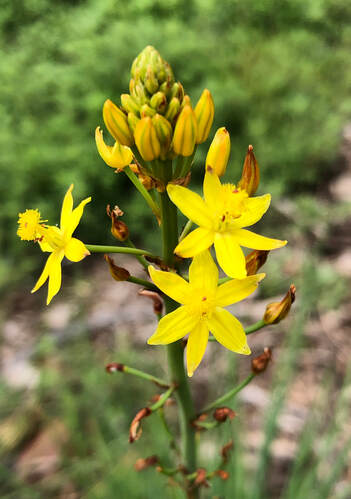 The beautiful Bulbine Lily The beautiful Bulbine Lily Harvesting Harvesting seed from small SPAs is usually done by hand or by using a small vacuum harvester. To capture most of the harvestable seed requires visiting the SPA every one to three days during peak production. However, some species can be harvested by cutting seed-bearing stems and allowing them to mature off the plant. Depending on the species, this means sacrificing some of the potential harvest but it requires much less labour. Bulbine Lily (Bulbine bulbosa) is a good example of a species whose stem can be harvested when the first two or three fruit are splitting. When the cut stems are kept intact in a dry environment, most already-formed fruits will mature their seeds over a few weeks. Of course, a level of experience is required to judge when best to harvest to limit the loss of mature seed that has already fallen while not sacrificing too much that fails to mature off the plant. ‘Optimum harvest time’ has been the subject of intense study for many agricultural and horticultural crops but has not been documented for most of our grassland species.  Kangaroo Grass, Themeda triandra, cleaned (in zip-lock bag) for sowing into tubes. KG florets and stems are visible in the black plastic tub Kangaroo Grass, Themeda triandra, cleaned (in zip-lock bag) for sowing into tubes. KG florets and stems are visible in the black plastic tub Seed processing and storage When SPA seed of herbaceous grassland species is being produced for local, more-or-less immediate use for tube stock production or direct sowing, very little processing should be required. For most species, viable seed will be harvested along with a considerable volume of leaf and floral material. For direct sowing, we check the seed lot to ensure it contains filled seed, then simply add the harvested seed and trash to our diverse seed mixes. For other applications, such as tube stock propagation, more effort can be applied to processing the harvest towards purer seed lots, usually using a combination of graded sieves and, possibly, more sophisticated gravity and air separation equipment if it is available. For short term storage (e.g. one to three years, some species for much longer), well-dried seed of most species can be stored at room temperature or in a +/- 4oC cool room without a significant loss in field germination potential. Longer term seed storage is a large topic that is well-documented in seed technology literature. Conclusion
While we work towards and await the development of a viable, regionally-based seed industry producing a comprehensive suite of native grass and grassland forb seed, restoration projects large and small will continue to rely on relatively small-scale seed production for diversity in their sowings. As well as fostering and enabling local restoration projects, well-managed SPAs are a wonderful opportunity for productive and highly satisfying volunteer involvement and, as demand grows, viable regional enterprises. The more SPAs there are, the more our species knowledge and innovative production systems will develop and be shared. And, as mentioned at the start of this article, growing seed can be a lot of fun.
2 Comments
DebB
26/4/2023 02:08:17 pm
Hi Stephen,
Reply
Steve
27/4/2023 03:03:59 pm
Hi Deb,
Reply
Leave a Reply. |
Click on the image below to discover 'Recreating the Country' the book.
Stephen Murphy is an author, an ecologist and a nurseryman. He has been a designer of natural landscapes for over 30 years. He loves the bush, supports Landcare and is a volunteer helping to conserve local reserves.
He continues to write about ecology, natural history and sustainable biorich landscape design. 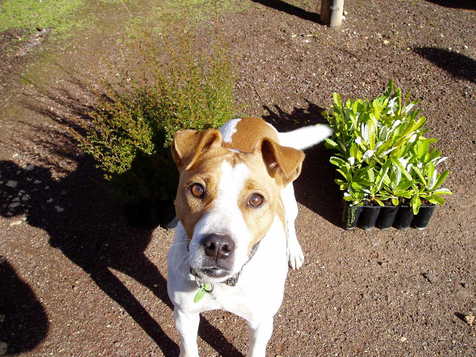
|
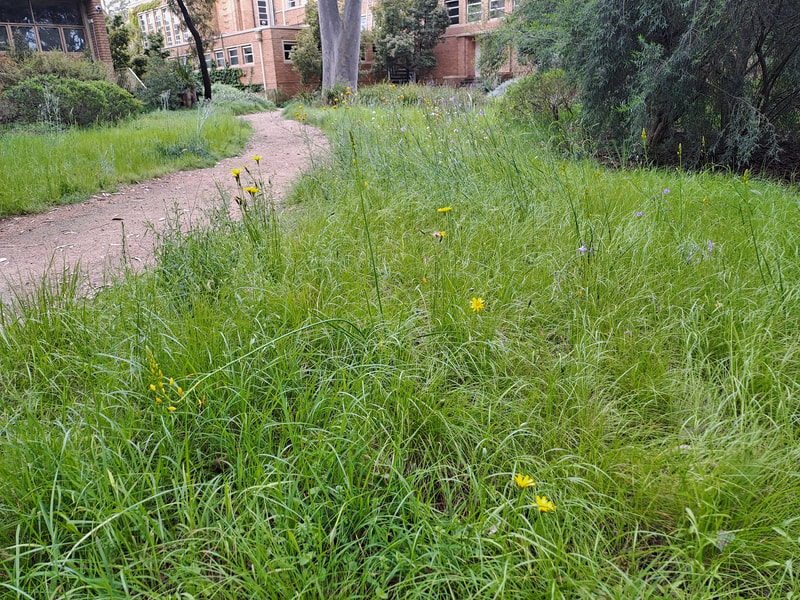
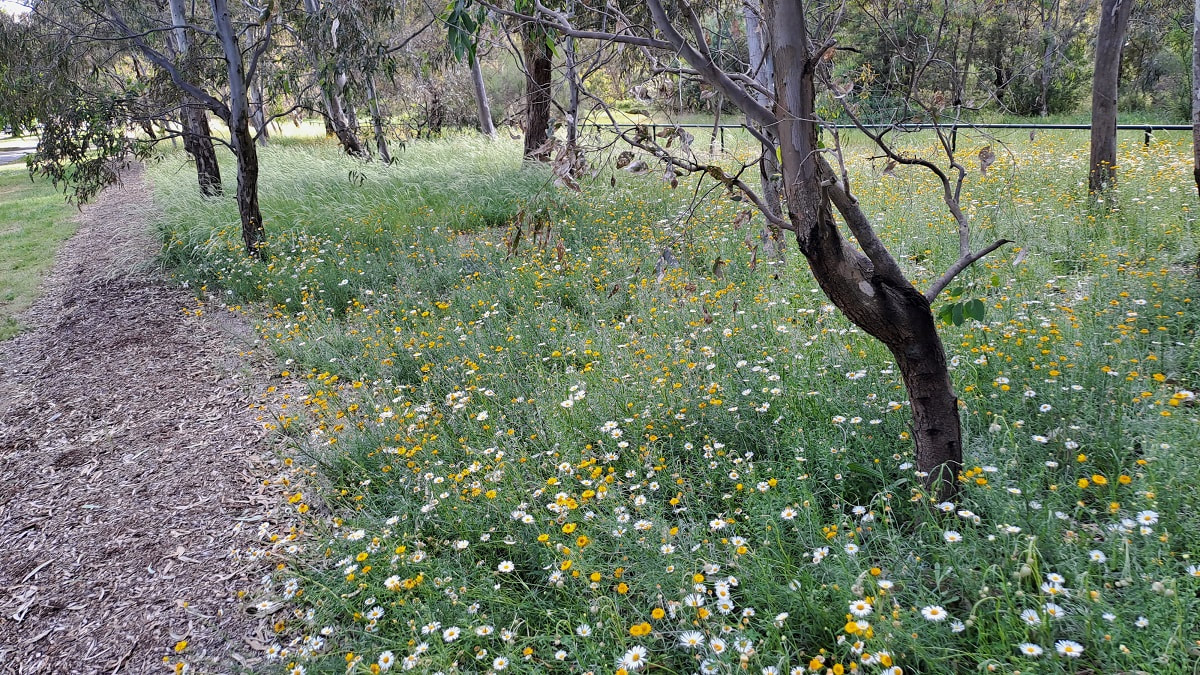
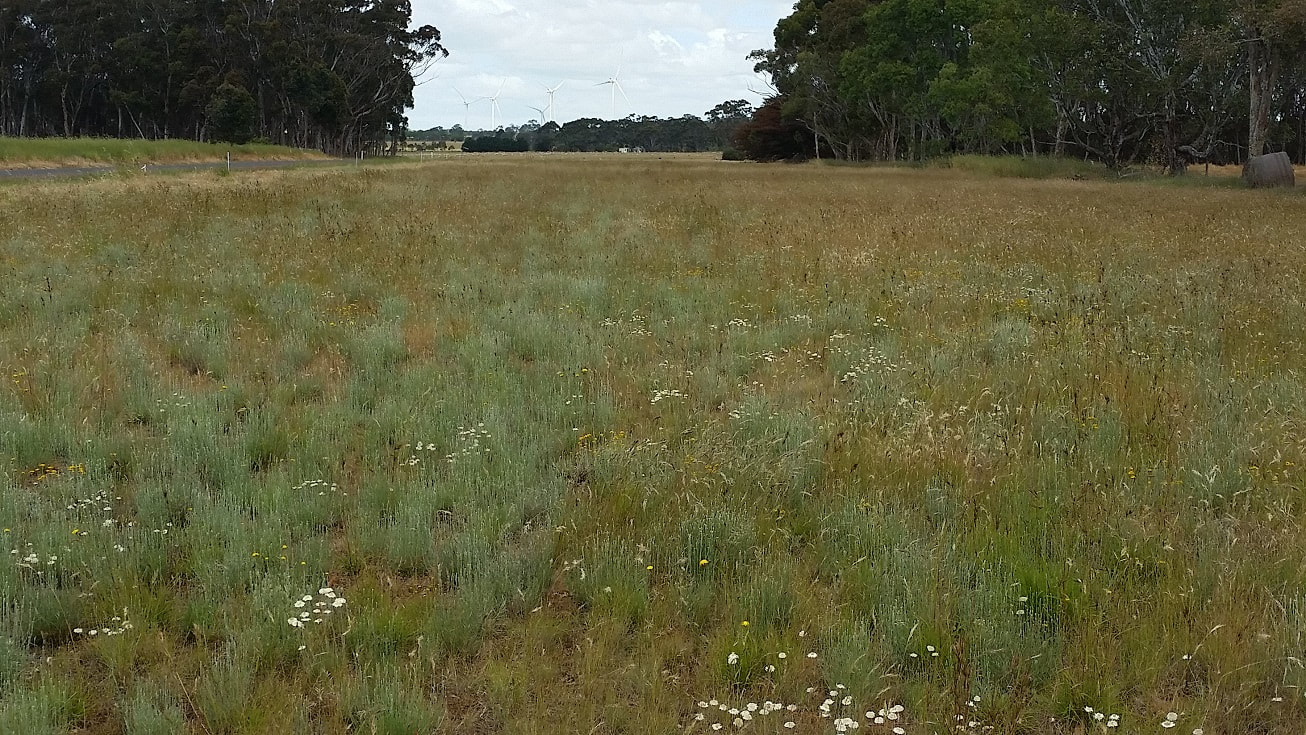

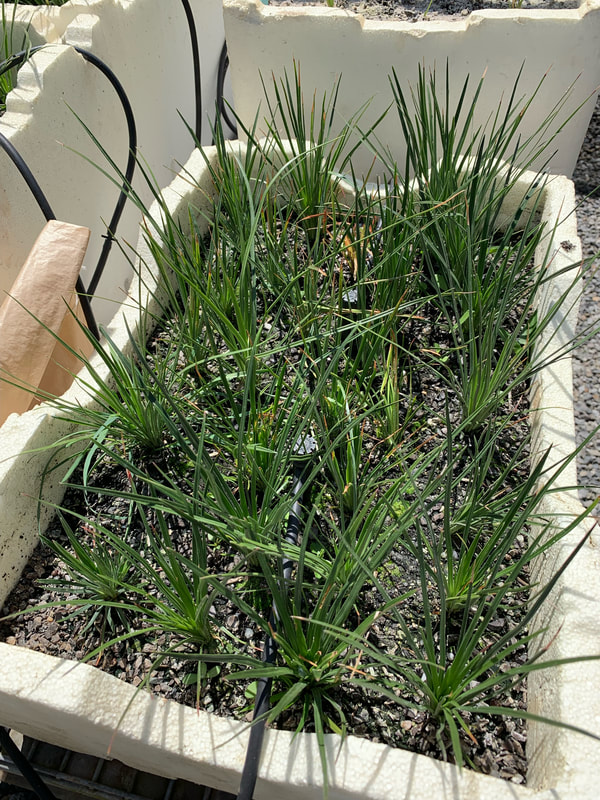
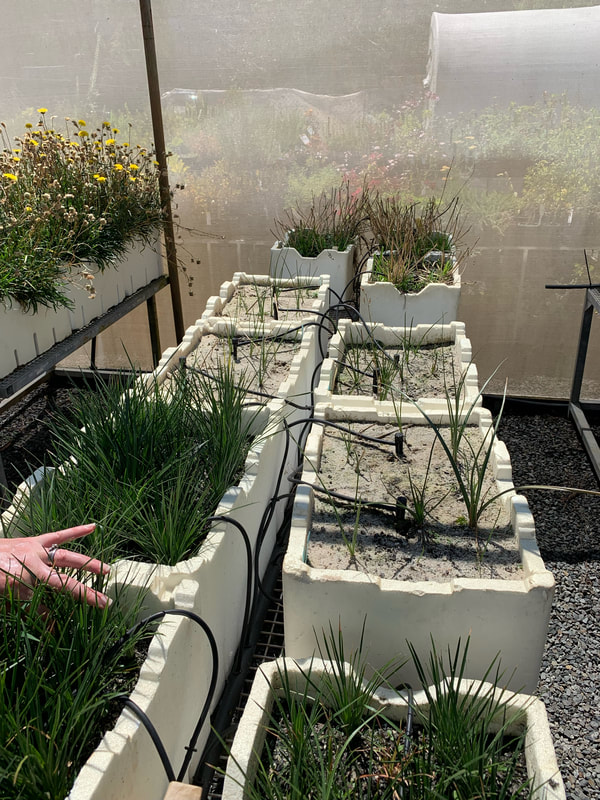
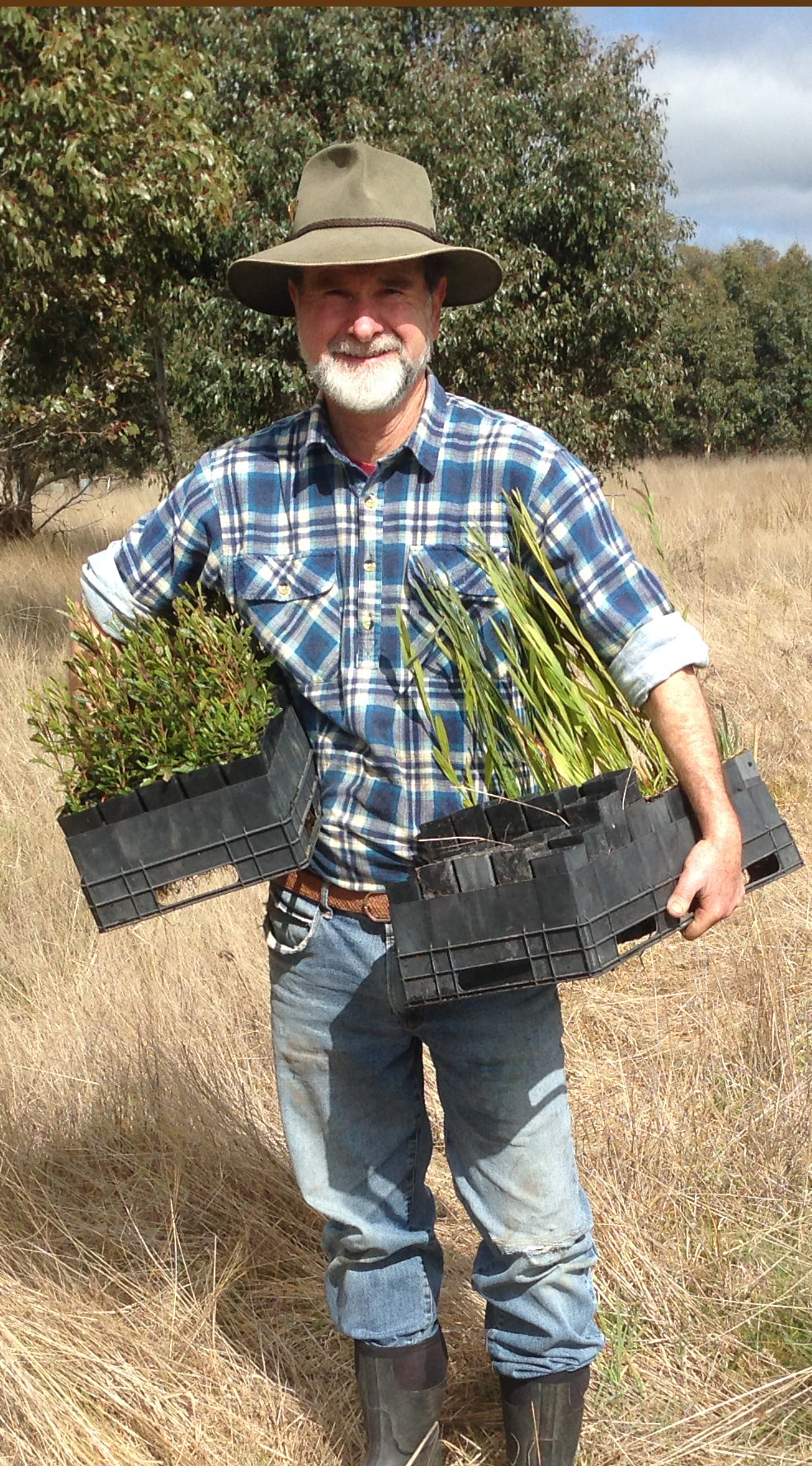

 RSS Feed
RSS Feed
